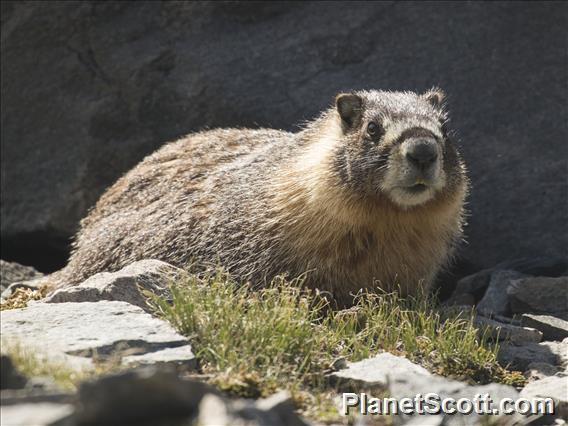Yellow-bellied Marmot (Marmota flaviventris)


About Yellow-bellied Marmot (Marmota flaviventris)
- Kingdom: Animals
- Phylum: Chordates
- Class: Mammals
- Order: Rodents
- Family: Squirrels
The yellow-bellied marmot, also known as the rock chuck, is a large, stout-bodied ground squirrel in the marmot genus. It is one of fourteen species of marmots, and is native to mountainous and semi-arid regions of southwestern Canada and western United States, including the Rocky Mountains, Sierra Nevada, and the Great Basin, often living above 2,000 metres. The fur is mainly brown, with a dark bushy tail, yellow chest and white patch between the eyes, and they weigh up to approximately 5 kilograms. They are highly social creatures, living in burrows in colonies of up to twenty individuals. They are diurnal and feed on plant material, insects, and bird eggs. They hibernate for approximately eight months starting in September and lasting through the winter. They have an average lifespan of 15 years.
Source: Wikipedia
Trips
Visits
-
2001-05-25
Emigrant Wilderness, United States of America -
2012-07-12
Yellowstone National Park, United States of America -
2021-06-09
Yosemite National Park, United States of America


